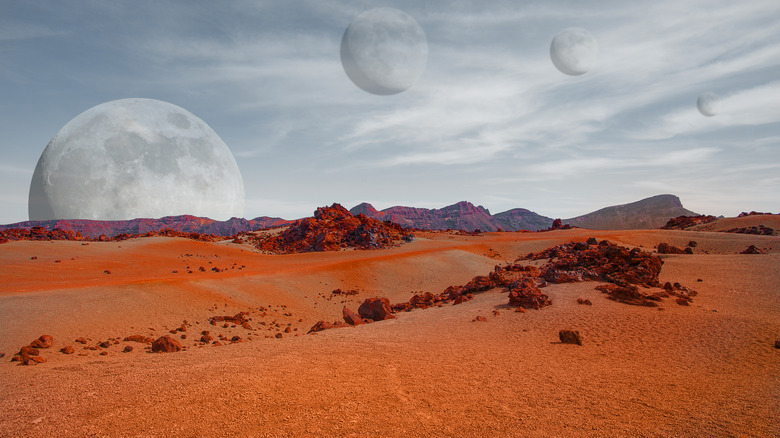NASA Wants To Mine The Moon, But Law Experts Say It's Not That Simple
Exploration in the outer reaches of our solar system and beyond is often the subject of science fiction. Space exploration is a common theme in the genre, and millions of readers flock to new titles in this space on a regular basis — SFWA noted that those who say they read science fiction amounted to about 21% of the U.S. population.
Something that goes underappreciated in the typical space exploration saga is all the work required to arrive at this distant future. In order to create a world in which humans traverse the galaxy and safely land on distant planets, we will first need to conquer our immediate surroundings in the solar system. Craft movement of any kind requires immense resource utilization, and to jump between planets or star systems demands even more recourse availability and efficient utilization. To achieve this, creating an effective means to harness these resources out in the field will be necessary.
This means finding and utilizing energy resources as well as a stable means of creating food and water essentials. Mining on the Moon could act as a first step toward this human future, and NASA has expressed an interest in making this transition in the coming years (via NASA). However, mining on the Moon — or any other extraterrestrial region beyond our home planet — isn't quite as simple as it sounds (although it certainly sounds pretty complex). There are some unique roadblocks standing in the way that have nothing to do with distance or a distinct lack of oxygen in the void above.
Expanded human exploration demands certain technological advances
The first roadblock facing humans as we seek to expand our presence in the solar system lies in technology. NASA reports that it takes about seven months (measured in Earth days) to travel from our planet's surface to Mars. Thrillist notes that travel to the Moon only requires a three-day journey, while exploration of Jupiter or Saturn (the next bodies out from Mars) would require a lengthy, six- or seven-year voyage, respectively. On a technical level, our current means of launching satellites and humans at these distant bodies is exactly that, a launch (via NASA). In order to make space travel more feasible for human explorers, we would need to develop a propulsion system that could continually deliver powered flight to a spacecraft, or at least the ability to continually augment flight speed, rather than simply relying on initial launch velocity to carry the craft along to its final destination.
This means a combination of two distinct realities: Humans must develop a brand new means of propulsion that requires far less storage space and mass, a revolutionary idea to be sure; and we must develop the ability to hop between planets and refuel along this lengthy journey. Therefore, technological advancement that would support increased space travel would require both colonization and a capacity for extracting mineral resources from the surfaces of neighboring planets and moons. Continuous habitation in new worlds would be required to support these efforts.
Resource development cannot be accomplished without coordinated human effort
A secondary roadblock stands in the way of human exploitation in regard to these extraterrestrial resources. During the Cold War, great efforts were undertaken by the United States and the Soviet Union to explore distant planets and the Moon. The politics of space exploration are complicated, but suffice to say, world leaders across the globe quickly became worried about the potential for conflict expanding beyond the boundaries of our world. For one thing, warfare in outer space would place human lives in grave jeopardy. But one natural extent of this conflict would be the ability to simply drop ordnance directly over combatant nations (via U.S. Naval War College), threatening to eviscerate the planet in the process. As a result, more than 100 countries including the United States and Russia have signed an agreement barring claims of sovereignty beyond the physical territory of the planet Earth, according to the United Nations.
But there is an inherent demand for sovereign claims that must be made in order to establish a permanent settlement on the Moon and elsewhere. The act of building anything exerts a certain level of ownership over a territory, and as a natural byproduct, in order to dig for minerals, humans must claim a space as their own and begin to build a community that will support these efforts.
Therefore, a coordinated effort to explore these far-reaching segments of our solar system must be made if we are to expand our presence beyond the surface of the Earth.


